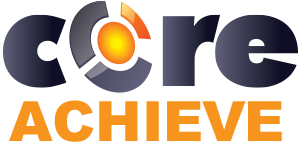The Essential Features for a LMS to Maximize Training Efficiency
February, 23 2023
Other posts:
Enhancing Team Dynamics for Effective Group Decision-Making with LMS Integration
Organizations increasingly rely on collaborative efforts to solve complex problems, innovate, and adapt to change, but how do we ensure that collaboration is happening.
Maximizing Small Business Potential with Training Technology
Training technologies can push small businesses ahead of their competitors, but what are the factors that go into choosing the right technology?
Unlocking Employee Potential: The Transformative Benefits of an Interactive Learning Management System (LMS)
Interactive training allows for unlocking employee potential, but how is it done?
Building a Robust Sales Pipeline with Training
Every organization wants a streamlined sales pipeline, but building one requires a series of interlocking activities with one of the most important being training.
Strategies for Adapting In-Person Training to Online Platforms
Online training is one of the most flexible ways of delivering training across organizations, but how do you even begin to adapt in-person training into online?
Is your organization using or searching for a LMS to boost your training? A LMS is a big investment and before you begin implementing any, watch for these key features that determine if the LMS will increase your efficiency.
A Learning Management System (LMS) is a platform designed to make your teaching efforts more efficient (whether they be commercial, educational, or communal) through numerous functions or features. However, not all Learning Management Systems are created equal and, among a sea of options, how do you know which will be more efficient?
Features Built for Efficiency
It’s easy to look at an LMS feature list and quickly get overwhelmed by all the jargonized options. Having all these features are great but some have a much greater impact on the ease of training than others. The following are a couple examples of those features to look for and why.
Having a Course Catalog
A course catalog will save you the most amount of time while ensuring your content is built by professionals in the training industry. This streamlines the longest part of eLearning, making a course. If you do already have older courses, then you could easily replace them with up-to-date content. Take CoreAchieve for example, you could pick from over 6000+ plus courses produced by Vector Solutions, ensuring that most common topics will have ready-to-go, modern courses. You don’t have to build any courses or even leave the CoreAchieve system to import any, just find and begin.
Data-driven Systems
Data is now the driving force in all most systems, and for good reason, data allows one to maximize the efficiency of something by making incremental improvements based on evidence. You can do that incremental process with your training too, provided your LMS has data-driven features. CoreAchieve partners with Microsoft, using Power BI to deliver automatic reports on your learners’ progress and statistics on quizzes, questions, assignments, and surveys. With this data you’ll know if a course or quiz are problematic—not everything is at fault of the learners.
Course Builder
Now, not to invalidate the point about the course catalog, but you’ll most likely want a course builder included with your LMS. While getting ready-to-go courses dramatically decreases time, every organization is different and it’s very possible that you’ll need a course specifically tailored to your needs. By having a course builder apart of the platform, it’ll cut down on hassle and, if you have data, it’ll allow you to make your courses more efficient. Some course builders offer different types of content you can add, so you’ll have to make sure it matches your needs.
Learning Paths and Learner Groups
Learning paths will prove to an essential part of your training routine as they all you to define a sequence of courses for your learners to follow. While also giving a route, learning paths allow you to make de facto course groups, like “New Hire Compliance Training.” Rarely is training ever completed with just one course and learning paths allow you to group, manage, and assign multiple courses bundled together.
Learner groups help efficiency in much the same way that learning paths do, that is, you can group learners together and assign them all the same content together. This may seem insignificant at first, but it’ll drastically reduce the time it takes to do common tasks like updating or messaging learners. Furthermore, learner groups will be reflected in reports meaning you can gleam insights for groups as well.
Active Users
Active users can mean a couple different things from how your organization is billed to what types of users are in the system. This refers to how the LMS charges your organization for their platform like charging based on total number of registered users. Others, like CoreAchieve, only charge based on active users (or users who took a course within that billing cycle).
What sets CoreAchieve apart—and makes your training more efficient—is that you can have an unlimited number of registered users. All with their own complete data, history, and profile, but if they don’t take a course, you’re not charged for them. So, you won’t have to constantly have to delete and reenter users to match your organization’s needs.
Just to Name a Few…
Out of all of the possible features, those above are what you should be looking for when investigating a LMS. Now, what matters most for your organization may differ, but these are solid foundations to build from. Another thing to watch out for are “tiered” features, some LMS providers will lock features behind certain subscription tiers meaning you might end up paying much more for one specific feature. CoreAchieve doesn’t withhold any features, including all regardless of tier—including the free version.
Photo by Carl Heyerdahl on Unsplash

Leave comment: